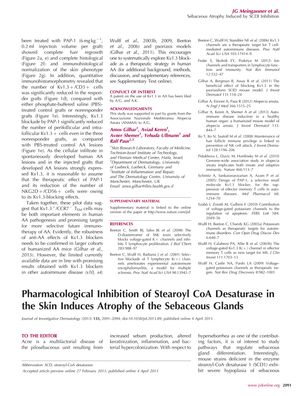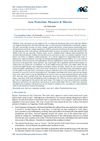Pharmacological Inhibition of Stearoyl CoA Desaturase in the Skin Induces Atrophy of the Sebaceous Glands
February 2013
in “
The journal of investigative dermatology/Journal of investigative dermatology
”

TLDR Blocking SCD1 in the skin with XEN103 shrinks sebaceous glands in mice.
The document reports on the effects of a novel stearoyl-CoA desaturase 1 (SCD1) inhibitor, XEN103, on sebaceous glands. SCD1 is an enzyme involved in the biosynthesis of monounsaturated fatty acids, and its inhibition has been linked to sebaceous gland atrophy. XEN103 was shown to inhibit SCD1 activity with high potency and selectivity in mouse liver microsomes, human HepG2 cells, and human SZ95 sebocytes. Topical application of XEN103 on mouse skin resulted in a significant reduction in the number and size of sebaceous glands without causing skin irritation. The atrophy of sebaceous glands was dose- and time-dependent, with a minimal effective concentration of 0.5% and a significant effect observed after 6 days of treatment. The effect was reversible, with sebaceous gland numbers and size returning to normal within 2 weeks after treatment cessation. The study concludes that XEN103 is a potent and selective inhibitor of SCD1 that induces sebaceous gland atrophy in mice, suggesting potential therapeutic implications for conditions like acne, where sebum production is a contributing factor.

